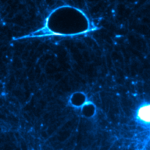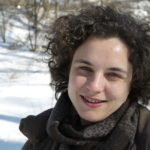About
CNF1 is a toxin that catalyzes the permanent activation of host RhoA, Rac1 and Cdc42 small GTPases by selective deamidation of a glutamine residue into a glutamic acid. This 1 dalton post-translational modification can be viewed as a “somatic missense-mutation” that promotes a permanent activation of Rho GTPases. Deamidation reaction is shared by a large number of bacterial effectors targeting different cellular proteins. Moreover, the spontaneous deamidation reaction of glutamine and asparagine residues of proteins is considered an intrinsic molecular clock of protein aging. Interestingly, we showed that eukaryotes have evolved a selective system that protects cells from the over-activation of Rho GTPases and notably in response to CNF1 action. This involves the targeting of activated Rho proteins to the ubiquitin-mediated proteasomal degradative system, as a function of their strength of activation.
We use high throughput mass spectrometry-based proteomic approaches to decipher proteome reshaping after UPEC infection and Rho GTPase activation.





